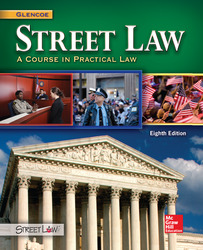
Street Law: A Course in Practical LawChapter 25: Credit and Other Financial ServicesChapter OverviewsConsumers can pay for goods and services using cash, checks and debit cards, or credit cards. Each payment method has certain pros and cons that are important to know. The Basics About Bank Accounts Checking and savings accounts are the primary types of bank accounts. To withdraw money from a checking account, a person may write a check, withdraw cash from an automatic teller machine (ATM), or use a debit card (which automatically withdraws money from a checking account). Consumers may also place money that they do not want to use on a daily basis into a savings account where it can collect interest. ATM and debit cards offer the convenience of a credit card without the interest rates and fees often associated with credit cards. An Introduction to Credit Using credit means buying goods or services now and paying for them later. When you use credit, you are borrowing money in exchange for a promise to pay in the future. People who lend the money are called creditors, and those who borrow it are called debtors. Debtors usually pay additional money, in the form of interest, for the privilege of borrowing the money. Paying for College Student loans allow college and graduate students to borrow money at reasonable rates in order to afford the cost of tuition and related expenses. These loans are often a person's first exposure to managing credit and debt. The Cost of Credit Credit is not free. The cost of credit includes interest and finance charges, as well as other charges that may be added. Consumers should be careful to avoid costly credit arrangements that unfairly benefit the creditor at the debtor's expense. What Lenders Want to Know Lenders require certain information from consumers before they will extend credit to them. They do this to ensure that their debtors will be able to repay their loans in the future. What If You Are Denied Credit? Your credit file is used by lenders to decide if you are a good candidate for a loan. If you are denied credit, you have a right to access your credit report to understand the reason for the denial. There may be steps you can take to establish credit or improve your credit rating. Default and Collection Practices A consumer may default on a loan when he or she fails to make a scheduled repayment to the creditor. There are several options for consumers who are having trouble paying their debts, the most drastic of which is declaring bankruptcy. Creditors also have options for collecting money from consumers who cannot or will not pay their debts. These include phone calls and letters, repossessing certain property, and court action. Lenders may not, however, resort to intimidation or harassment to collect payments. |  |















